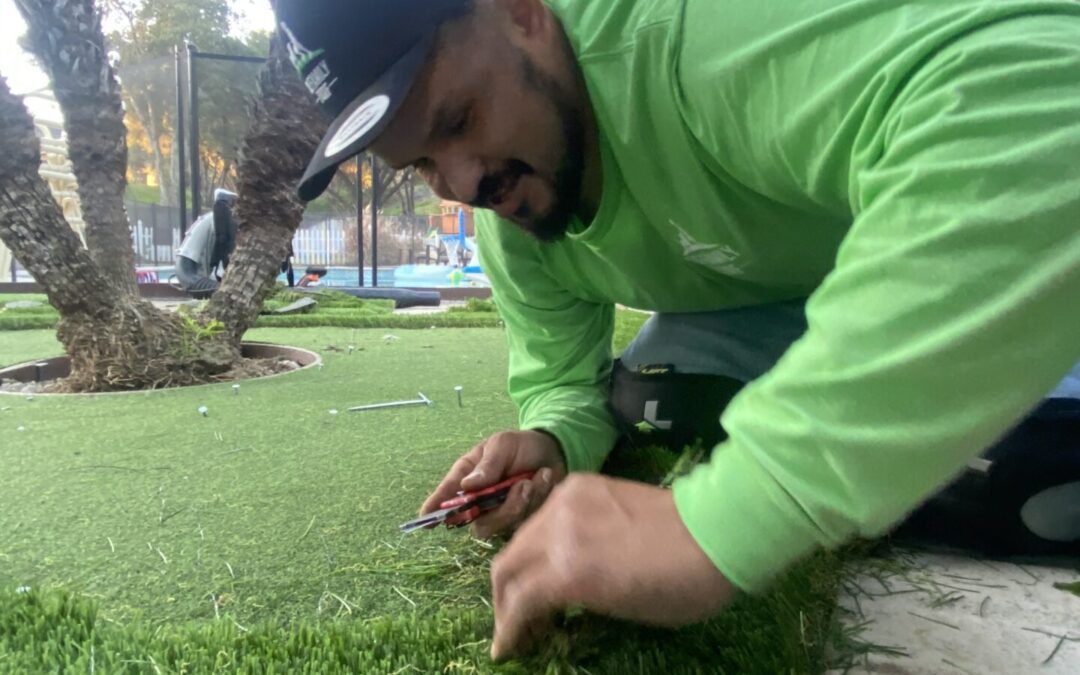Artificial grass has several advantages, such as low care requirements and aesthetic appeal, but these benefits may only be fully appreciated if the turf is properly installed. In order to protect everyone using the space and safeguard their health and safety, we will examine in detail in this article the key elements of installing artificial grass.
Base Setting: The Basis for Safety
For your fake grass to last and be safe, a sturdy foundation is necessary. The existing ground should be carefully prepared prior to installation. It is necessary to excavate the area and remove any organic material, rocks, or rubbish. The surface should then be made stable by compacting a crushed stone or gravel base. It is crucial to have adequate drainage to avoid water buildup and possible slips.
Installation of Weed Barriers: Preventing Unwanted Growth (If Needed)
A weed barrier layer is required for proper installation in order to stop weed growth underneath the artificial turf. To detracting from your landscape’s aesthetic appeal, weeds compromise its safety by causing an uneven surface that can cause slips and falls. A top-notch weed barrier membrane will aid in keeping undesirable vegetation away from your artificial grass.
Shock Absorption and Proper Padding: Reducing Impact Injuries
Padding and shock absorption are essential factors to take into account for locations where kids can play or where people might participate in physical activities like sports or exercise. A shock-absorbing underlay can be used beneath fake grass to offer a cushioning effect and lower the risk of injury from falls. This is crucial for playgrounds because accidents tend to happen more frequently there.
Selection of Infill: Juggling Safety and Aesthetics
The safety, functionality, and overall beauty of your fake grass are all influenced by the infill materials. Depending on the purpose, silica sand, rubber granules, or organic infills are frequently utilized as infills. Finding the ideal balance between an aesthetically pleasing design and the security of the consumer is crucial. With the right infill, you can avoid slides without sacrificing your landscape’s visual appeal.
Preventing Falls and Trips Through Seaming and Fastening
A tripping hazard can be created by artificial grass that has been improperly attached or seamed. The turf will remain level and secure for walking, playing, or exercising if the edges and seams are firmly fastened using the proper adhesives. This action is crucial to preventing accidents, especially in places with heavy traffic.
Maintaining Regularly: Ensuring Long-Term Safety
Even after a suitable installation, regular upkeep is necessary to guarantee the continuous security of your artificial grass. Debris, leaves, and other things should be routinely removed to avoid potential trip hazards. Maintaining the infill level and redistributing it as necessary can also help maintain the right amount of traction and cushioning.
Properly installed artificial grass goes beyond just being aesthetically pleasing; it also protects the health and safety of individuals who will use the area. Every stage of the installation process, from creating a sturdy base to choosing the right infill materials, adds to the area’s overall safety. You may design a landscape that looks lovely and is a secure space for play, leisure, and recreation by taking into account elements like padding, drainage, and routine maintenance. To make sure that your landscape is both aesthetically pleasing and secure for everyone to enjoy, it is always advised to consult with experts who have expertise installing fake grass if you have any questions about the installation procedure.

